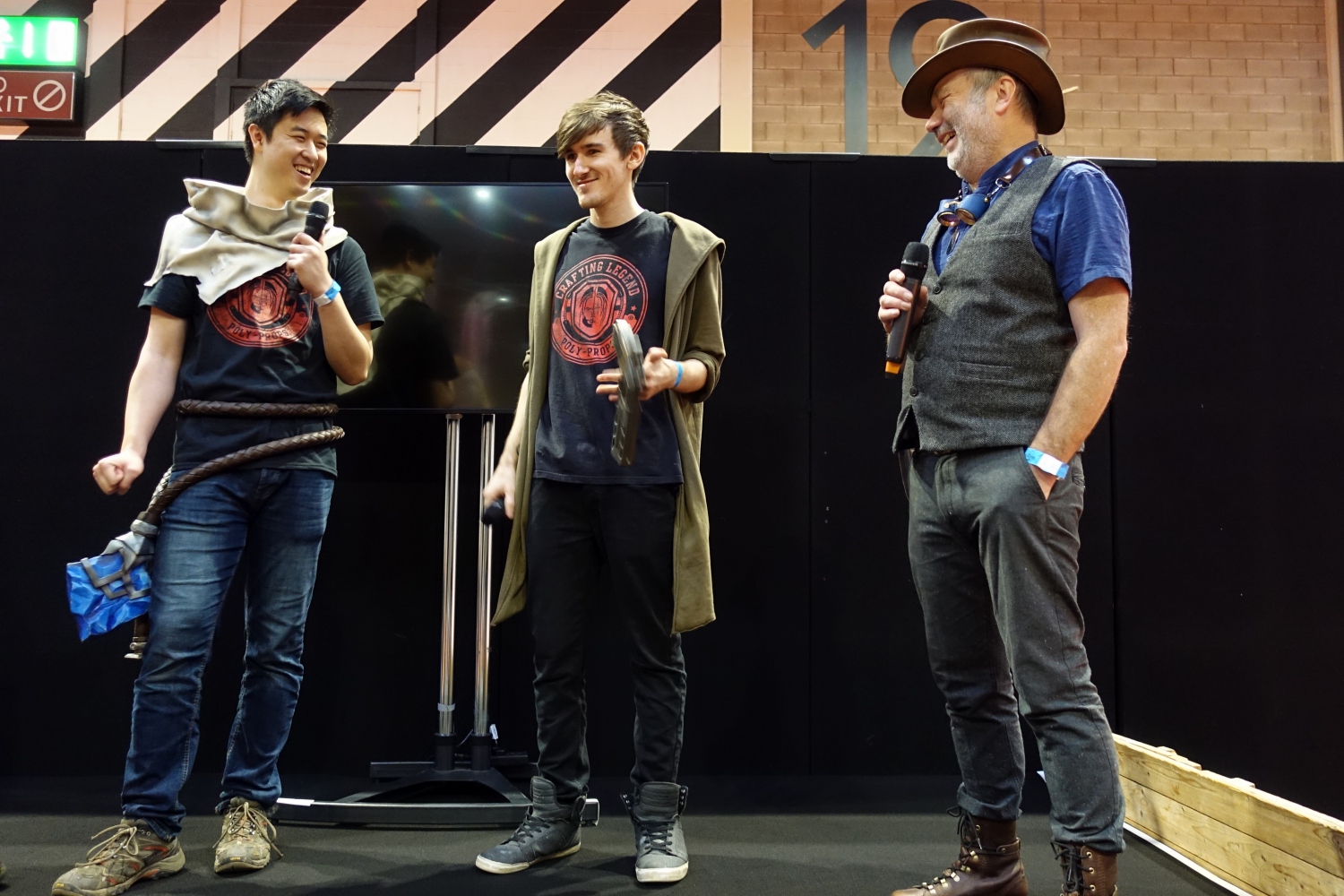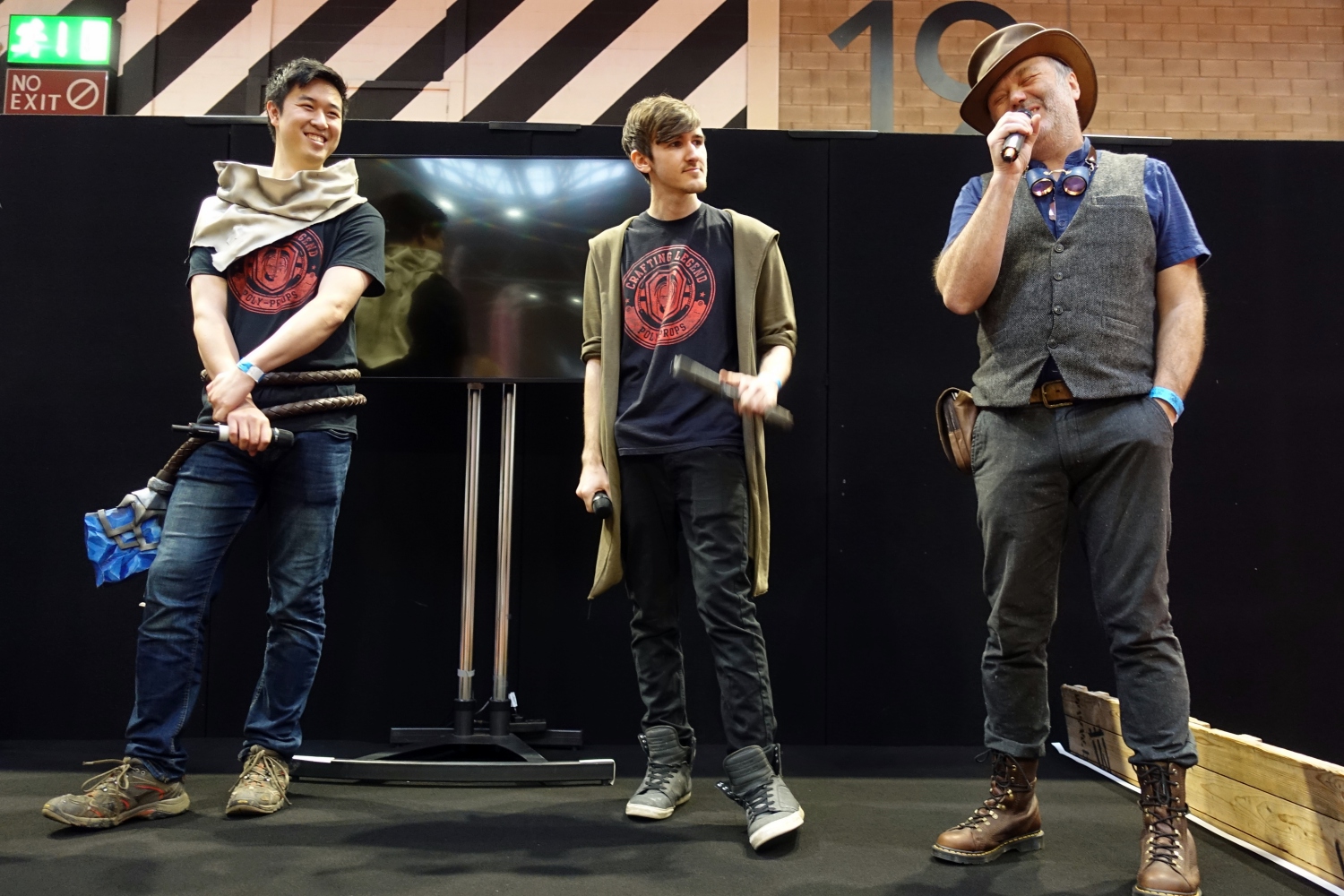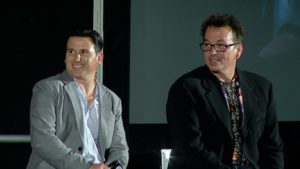The Saturday of MCM Birmingham Comic Con saw an informal discussion on whether cosplay could be a profession. Taking place on the Community Stage, the chat involved Kenny Chan of Kenny Cosplay Stuff, James Sharman of No Heroes Cosplay and John Naylor (Major Thadeus Tinker), organiser of The Asylum and Steampunk Emporium at MCM Comic Con.
The trio was asked straight away on if they thought cosplay could be a profession. “It’s like any kind of creative industry you want to get into,” said James adding that cosplaying as a career would involve a lot of different elements. “So, guesting at conventions, doing stuff on Patreon, selling prints, all those kind of things could make it a career.”
“I started with costume play before you guys were born,” said John, who revealed that he now works in the TV industry and that it all started from cosplay. “For the last 18 years, I’ve made a full-time living from costuming for film, TV, guesting at conventions. So yeah, you can make a living out of it.”
“When you say professional cosplayer, the first people that come to mind are Jessica Nigri and Kamui Cosplay,” said Kenny. “But I don’t think they would regard themselves as a professional cosplayer.” He noted how Kamui is more than just a cosplayer, given that she is also a costume designer, prop-maker and author.
John responded that this has come about due to a change of the nature of the industry. “Comic Cons, they’re a growth area. I’ve been involved with MCM for ten years. The scene over in LA and San Diego is exactly the same. Traditionally cosplay has been something you play at. [Now] people have wanted to label themselves as something else. They want to not be called cosplayers because they want to be taken seriously.”
John also added that now is the most exciting time to be a cosplayer and explained how he had worked on a series called Ancient Discoveries. “38 million viewers all around the globe,” said John of the series. “Do you know where all the money was made? Online on YouTube. That series made $8 million online in things like how we did it, behind the scenes, making all the props and stuff like that.”
“If you’re doing that, that’s not necessarily cosplay at that point,” responded James. “That’s more working in a professional industry.”
“But I’m a fake,” replied John. “I’ve never gone to college or studied it. They just pay me to do this.”
James felt that one could be a professional cosplayer, highlighting Kenny’s example of Kamui Cosplay doing more than just cosplaying, saying “All those different things are just different elements of cosplay as a whole. If you’re doing all those different things and cosplaying, and making a living out of it, that seems to me what you would call a profession.”
 Asked on if cosplay would be seen as the profession or the fun side of being a model, costume designer or prop maker, John responded, “Why do you have to put a label on it and say, ‘That’s it’? If you enjoy costumes and they’re going to pay you for it, then you’re a professional cosplayer.”
Asked on if cosplay would be seen as the profession or the fun side of being a model, costume designer or prop maker, John responded, “Why do you have to put a label on it and say, ‘That’s it’? If you enjoy costumes and they’re going to pay you for it, then you’re a professional cosplayer.”
James also agreed that one could be a professional cosplayer, citing how it would involve a lot of hard work in multiple fields. He highlighted Kinpatsu Cosplay as an example, saying, “She does prints, she does Patreon, she does a lot of tutorials, she does photoshoots on her own that she sets up, she does guest at cons, streamer on Twitch as well. So there’s a lot of different things, but she does make a living out of it.”
Kenny added how the term ‘professional cosplayer’ can sometimes paint a bad picture on what cosplay guests do. “A lot of people aspire to be a cosplay guest,” said Kenny. “But then they don’t know what’s involved.”
Asked on what separates a great cosplay from a good cosplay, James pointed out the ability to look at your own work with a critical eye. “Always be willing to take some criticism is a good start. And always look at what you could improve and do better next time.”
John agreed, saying, “I don’t know any good cosplayer who is ever happy with what they’ve built. The guys at the top of the tree, they’re always thinking, ‘Oh, I could do that a little bit better.’”
“Don’t take any negative criticism badly,” said Kenny, who added that rather than crying and posting about criticism on social media, you could use it on your next project to shut people up.
James recounted an experience when he posted photos of one of his first cosplays online, saying, “I got a lot of negative comments about it. Initially, I was very upset about it, but then a little while afterwards I was looking at it objectively. Like, ‘People are seeing faults in this, maybe I should look at it again from a distance.’ That actually really helped me become more critical of my own work.”
In making a great cosplay stand out, Kenny mentioned using a can of compressed air to get rid of dust and ironing clothes beforehand. “You get really wrinkled dresses and they’ve obviously pulled it out of their suitcase,” he said. “It’s little things like that which separates a good costume from a great costume. Little details just to make sure it looks perfect and polished.”
 Asked on advice for those thinking of getting into cosplay, Kenny began saying that it’s difficult to help those that actually haven’t tried at all. “If you are planning on making something, someone else has probably already made it, or something similar. So check out how they’ve done. Check out other cosplayers. Don’t be afraid of asking people what they’ve done for their costume.”
Asked on advice for those thinking of getting into cosplay, Kenny began saying that it’s difficult to help those that actually haven’t tried at all. “If you are planning on making something, someone else has probably already made it, or something similar. So check out how they’ve done. Check out other cosplayers. Don’t be afraid of asking people what they’ve done for their costume.”
James recommended starting with something small, quick and easy. “Like a prop knife that you can build quickly and see some results,” he said. “Something that you can have finished and look at, but doesn’t take a huge amount of time to get done. That’s how I got started and worked my way up.”
John offered advice for newcomers and experts alike, saying “Don’t be afraid to throw something away and start again. You have people that get so invested in a project and they bodge a piece. They think they’ve got to fix that piece for a piece of armour. You end up with the rest of the build, which has got better and is really cool, but you’ve got one shoulder guard which really deserves to be in the bin.”
Kenny added, “My approach is, go big or go home.” He mentioned that his first cosplay was Iron Man, which he initially searched online to see how much it would cost to get the costume for himself. “Oh, three-grand, two-grand for a whole costume… I was like ‘If someone can make it, how hard could it possibly be?’ I was wrong, but I ended up with a costume anyway. Then again, it got me more addicted. It’s definitely not cheaper than doing drugs, but it’s healthier.”
The trio were finally asked if geek was the new cool. “It’s got to be,” said John, as he mentioned how many towns in the UK now have their own comic conventions. “I run The Asylum, which is the world’s largest steampunk festival. The Evening Standard voted it the top thing to do on the August Bank Holiday and it’s not even in London. We had nearly 200,000 people turn up and take over the city [of Lincoln].
“Yes,” said James without any hesitation. He cited the popularity of comic book movies on the big screen. “Almost the only thing you can see in a cinema now is comic book movies. That’s a pretty big indicator. It’s pretty normalised, it’s mainstream now.”
“Who doesn’t like superheroes?” said Kenny on the increased popularity of comic book movies, adding, “Don’t be ashamed of what you like and don’t like.”
Originally published on MyM Buzz on 30 November 2018.



